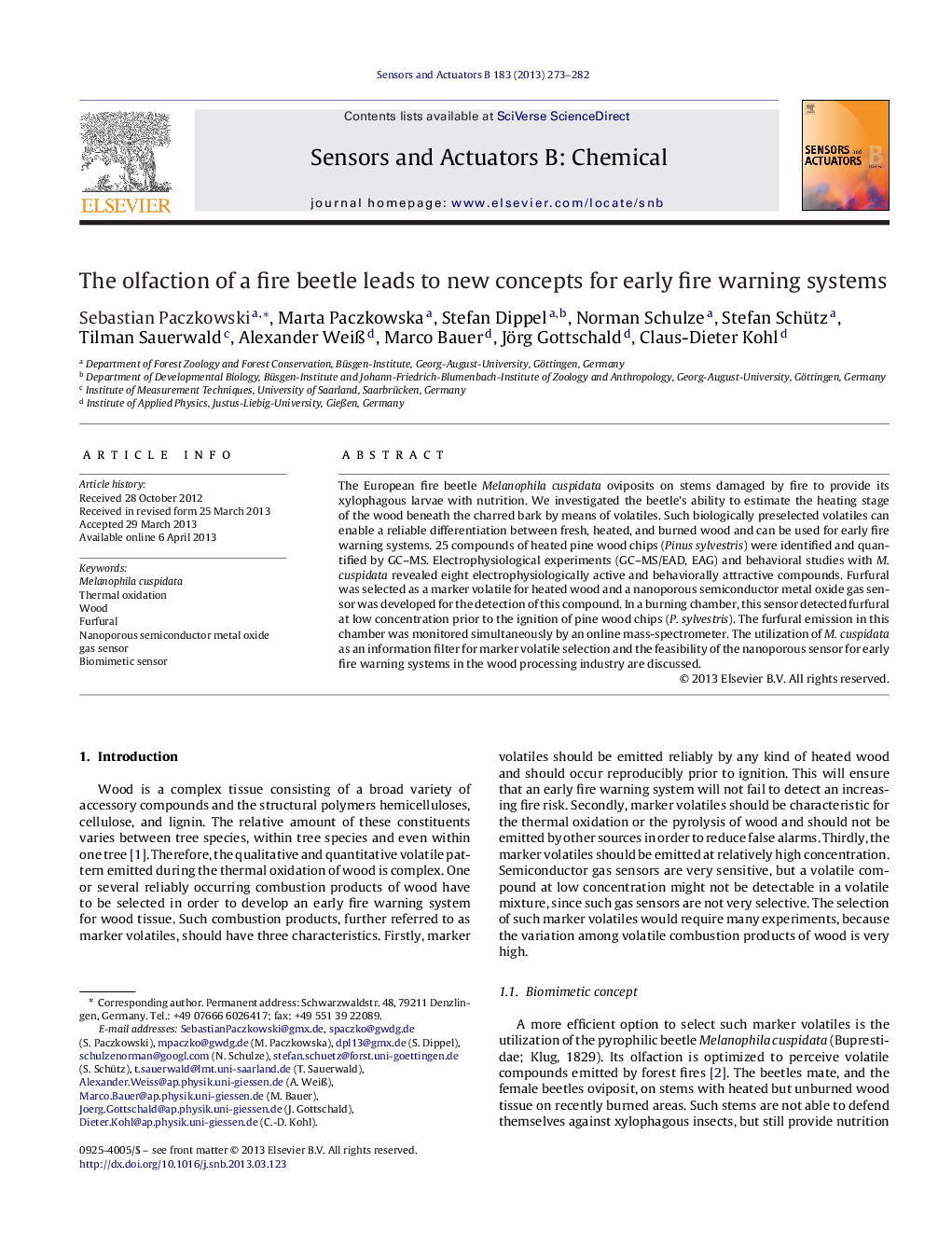| Article ID | Journal | Published Year | Pages | File Type |
|---|---|---|---|---|
| 743051 | Sensors and Actuators B: Chemical | 2013 | 10 Pages |
The European fire beetle Melanophila cuspidata oviposits on stems damaged by fire to provide its xylophagous larvae with nutrition. We investigated the beetle's ability to estimate the heating stage of the wood beneath the charred bark by means of volatiles. Such biologically preselected volatiles can enable a reliable differentiation between fresh, heated, and burned wood and can be used for early fire warning systems. 25 compounds of heated pine wood chips (Pinus sylvestris) were identified and quantified by GC–MS. Electrophysiological experiments (GC–MS/EAD, EAG) and behavioral studies with M. cuspidata revealed eight electrophysiologically active and behaviorally attractive compounds. Furfural was selected as a marker volatile for heated wood and a nanoporous semiconductor metal oxide gas sensor was developed for the detection of this compound. In a burning chamber, this sensor detected furfural at low concentration prior to the ignition of pine wood chips (P. sylvestris). The furfural emission in this chamber was monitored simultaneously by an online mass-spectrometer. The utilization of M. cuspidata as an information filter for marker volatile selection and the feasibility of the nanoporous sensor for early fire warning systems in the wood processing industry are discussed.
